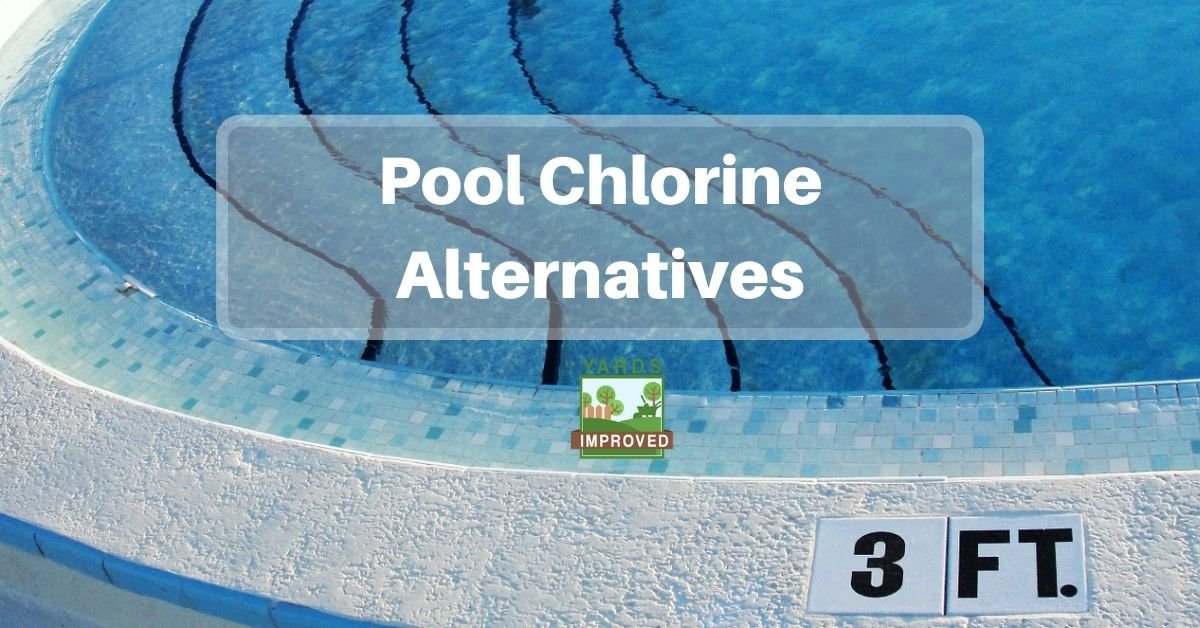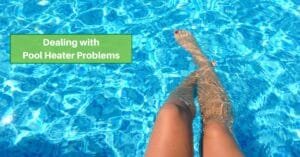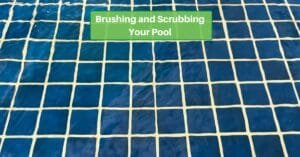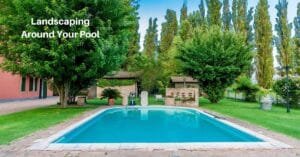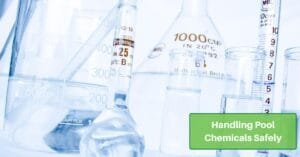Swimming pools are great to have, but they do require a lot of care. Most of that work is to keep the water clean – not just looking good, but also free of dangerous levels of bacteria or other harmful elements. That’s why chlorine is generally used in pool water. However, there are times when chlorine isn’t the best choice. So it’s important to know what alternatives are available so that your swimming pool will stay in great shape. There are a couple choices out there – are you familiar with them?
Why Does Pool Water Need To Be Treated
The water you add to your pool probably comes from a municipal water supply. It’s been treated to purify it and to kill off all kinds of microscopic organisms that can grow in untreated water. However, that protection soon wears off. And that means those elements can start to creep into your swimming pool.
Some of them come from the air and others are on your body. When you wash or bathe, most of them are removed. But in the pool, they have the opportunity to reproduce. Pool water temperatures are ideal for this.
Check your pool water’s temperature with a digital or analog thermometer.
Your pool filters and chemicals both help to remove impurities from the water. The chemicals can take care of things that are too tiny for the filters to handle. If not for these, the filter itself would be prime real estate for the growth of algae, bacteria, and other tiny creatures.
In short, your pool is treated with chlorine – or other chemicals, as we’ll see – to control these elements that we can’t see with the naked eye but that can be harmful to us.
Learn how to test your pool water.
Pros And Cons Of Chlorine
Chlorine is the most common chemical used to treat pools. That’s true for your backyard pool, a private club pool, or a public pool. When used correctly, it does a great job of controlling bacterial contamination.
This is the most effective way to keep pool water healthy. It’s also probably the least expensive way to do the job.
On the other hand, chlorine is a powerful chemical. The smell is very noticeable and can be overpowering especially after a recent treatment.
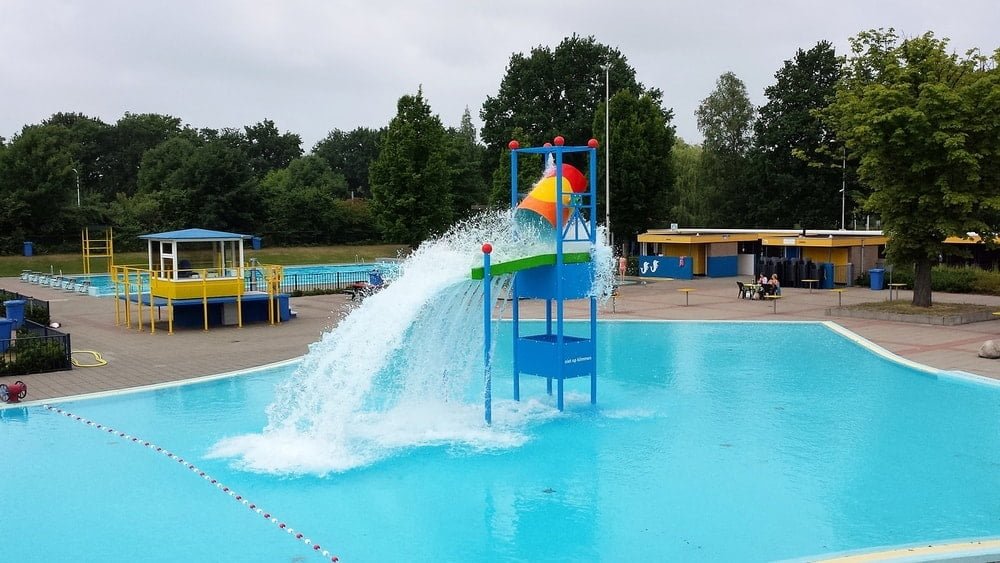
But the smell is not the only issue. Many people suffer eye and skin irritation after chlorine exposure. Long-term exposure can even lead to longer-lasting irritation. So it definitely has its drawbacks.
We do want to point out that there is no evidence that chlorine as used in swimming pools (or in drinking water supplies) causes cancer. While concentrated chlorine such as bleach does cause health problems, a pool or drinking water is nowhere near levels that present the same dangers. This false association arose because of a misunderstanding of the nature of the chemicals involved.
Some Alternatives to Chlorine for Swimming Pools
If you’re looking for an alternative to chlorine, you’re in luck. There are a variety of ways to treat your pool and keep it in great shape. Again, chlorine is the most effective, but if it is too irritating or you want a change for other reasons, you have alternatives.
These range in price and effectiveness. Some of them still call for the use of chlorine but in more limited amounts.
Bromine
Bromine is another chemical treatment for pools. Since it works best at high temperatures, it’s often used for spas. It has more limited effectiveness at pool temperatures but can still do the job.
If someone in the household is allergic to chlorine, this is a possible – but not definitive – solution. Bromine is chemically related to chlorine so some people will have the same reaction to it.
A combination of bromine and chlorine is often used because bromine doesn’t oxidize the water well, although it does clean it. Tablets are typically 66% bromine and 27% chlorine. So that’s a substantial chlorine reduction.
If you want to get rid of all the chlorine, you could use bromine salt and then add potassium peroxymonosulfate.
Bromine alone can work to clean the pool, but the water will have an ugly green color and bubble when you swim (bubble bath type bubbles, not the type from witch’s brew!)
The cost of running a pool with bromine instead of chlorine is close to double the cost of using just chlorine.
Saltwater Pool
Another option is to use saltwater in your pool rather than fresh water.
In reality, saltwater pools still use chlorine but eliminate almost all the irritating parts. That’s because it’s not the chlorine itself that smells and causes irritation; it’s actually a byproduct of its breakdown. A saltwater pool system keeps that byproduct, called chloramines, at a low level while using chlorine itself to sanitize the pool. The whole process is performed by a salt cell which needs to be replaced every five years or so.

The salt you’ll add to the pool is relatively inexpensive. However, it can cost from $500 – $2000 to add the equipment. So it’s a larger upfront cost but cheaper over time.
Salt water pools still require maintenance, but at least you won’t have to worry about buying and carrying chlorine every year. Salt water can also cause damage to the pool surfaces. For a good explanation of why you can check out this article.
Ionizers
In a very limited range of circumstances, an ionizer can help you cut back a lot on the amount of chlorine you use. It might even work better than chlorine alone.
An ionizer isn’t too expensive – you might pay $300 to $400 for one that can handle a 40,000-gallon pool. It uses copper and silver which might need to be replaced annually but they cost less than $150 each time.
However, an ionizer is only effective when conditions are optimal. That means low air pollution and limited foliage. It also loses effectiveness if more than a handful of people use the pool at once. So basically, it’s great if you live in the middle of the desert and don’t have many friends. But if those are your circumstances, then it can really be a good investment.
Ozonators
Here’s another way to cut back substantially on the use of chlorine. This one can eliminate the need for about 60-90% of chlorine you would use if that was your only source of sanitizing the water.
An ozonator attaches right to the pipe leading to your filter and injects ozone gas into the water. This supports the chlorine in helping to break down organic matter.
With an ozonator, you’ll get rid of calcium scaling on your pool walls because the water is much softer.
An ozonator is one of the more expensive options, and you still need to use chlorine with it.
PHMB
When you want to cut the chlorine completely, this is the way to go. This is a chemical treatment using polyhexamethylene biguanide. It destroys bacteria effectively and so keeps your pool sanitized.
Like other non-chlorine treatments, though, PHMB doesn’t oxidize the water. You’ll have to use hydrogen peroxide for that. And you’ll need to add algaecide, too. And your filters will have to be cleaned every month to six weeks, no matter what type they are. So there is a bit more work, but at least you won’t be dealing with the chlorine at all.
A season’s supply of PHMB – known under the brand names Baquacil and Softswim – costs between $700 and $800 dollars.
Conclusion
Swimming is loads of fun, but if you want to limit your chlorine exposure, there are a number of ways to go. In most cases, you can cut back on the chlorine, but with PHMB you can eliminate it completely. No option is perfect – chlorine really does have a lot going for it. But it’s always good to know that there are alternatives!

